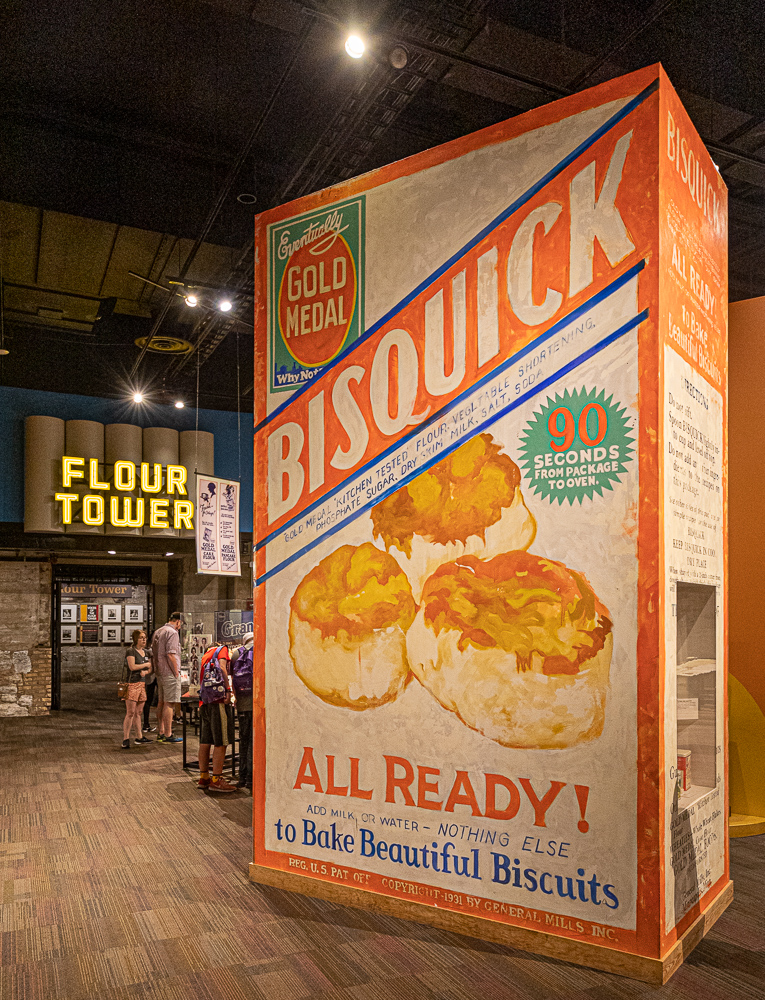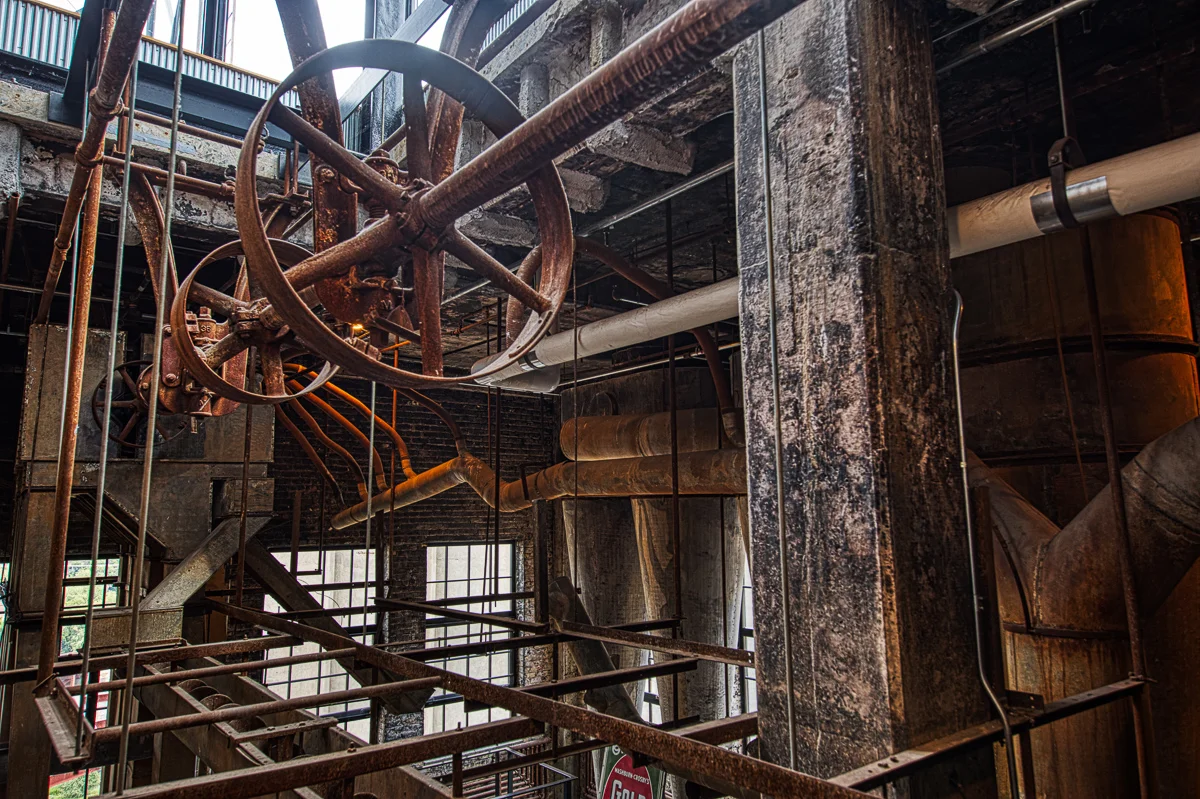From 1880 to 1930, Minneapolis led the country in producing flour. The city was founded on the banks of the Mississippi River by the only major falls on the river. The falls were harnessed to power mills on each bank. Grain from Minnesota, the Dakota and elsewhere was brought in by river, wagon and horse. Below is the Stone Arch bridge built in 1882 for trains and now is a bike and pedestrian bridge. In the distant center is the red sign over the Pillsbury Mill.
Stone Arch Bridge with St. Anthony Falls
The view above is from the top of the ruins of General Mills, which started as the Washburn Mill. The mill was abandoned, but eventually converted into the Mill City Museum.
Mill City Museum from the Stone Arch bridge
The lower floor of the museum has artifacts from flour production, milling, marketing and transportation. Washburn/General Mills was able to market its flour as “Gold Medal” because it won the top prize at the one and only International Millers Exposition in Cincinnati in 1880.
In the image above is a sign for the Flour Tower. It is one of the best museum features you’ll experience. A couple dozen people sit in a massive freight elevator that goes up and down seven stories to tell the history of the mill. If you’ve been to the Tower of Terror at Disney, it’s sorta like that, but without a free fall. You exit at the top and get to view some of the ruins of old mill, and imagine the pounding of the machines and the hustle of the workers.





